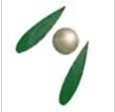Wheat gluten
Wheat gluten Specification
- Solubility
- Insoluble in water
- Ingredients
- Wheat Gluten
- Application
- Bakery, noodles, imitation meats, feed industry
- Source
- Wheat Grain
- Chemical Composition
- Glutenin and gliadin proteins
- Product Type
- Wheat Gluten
- Form
- Powder
- Starch Type
- Wheat
- Color
- Light Yellow
- Weight
- 25 kg
- Shelf Life
- 12 Months
- Packaging
- Plastic woven bag with inner polyethylene liner
- Fat Content (%)
- 1.5%
- Moisture
- 8%
- Grade Standard
- Food Grade
- Pack Size
- 25 kg
- Flavor
- Neutral taste
- Physical State
- Powder
- Pack Type
- Bag
- Purity
- 99%
About Wheat gluten
It is made by washing wheat flour dough with water until all the starch dissolves, leaving insoluble gluten as a gummy mass, which is subject to further processing.Wheat gluten, although not as well known, is an alternative to soybean-based meat substitutes such as tofu. Some types of wheat gluten have a texture more like that of meat than most other substitutes, because of their chewy and/or stringy texture. Wheat gluten often is used instead of meat in Asian, vegetarian, Buddhist, and macrobiotic cuisines. Simulated duck is a common use for wheat gluten.
Wheat gluten is most popular in China, where it was first developed, as well as in the cuisines of other East and Southeast Asian nations. In Asia, it is commonly found on the menus of restaurants catering primarily to Buddhist customers who do not eat meat.
Because it was first popularized in western nations during the second half of the 20th century through its promotion by proponents of the macrobiotic diet, seitan (the name by which it is known in macrobiotic circles) is also the name by which wheat gluten is best known in most English-speaking nations. In the West, prepared wheat gluten is generally available only in Asian markets and health food stores (although gluten flour is commonly available in supermarkets).
Use
In Chinese cuisine, most forms of wheat gluten are typically red cooked or braised, such that it can absorb the flavours of the braising liquid. Fried wheat gluten balls that are large and puffed-up, such as da mianjin qiu can be stuffed with fillings. It is not common in Chinese cuisine for wheat gluten to be consumed "plain."
In Japanese cuisine, gluten is cooked and simmered in soup such that it gains flavour from the broth. In addition, baked wheat gluten with its spongy texture is added directly to soup as it is served for use as a decorative condiment. In Japan, wheat gluten is also directly consumed in the form of dumplings after they have been steamed.
Wheat gluten is also sometimes used in pet foods. Wheat gluten from China adulterated by melamine has been blamed as the cause of a widespread recall of pet food in March 2007.
Food additive
Gluten is used as a stabilizing agent or thickener in products such as ice-cream and ketchup, where it may be unexpected. Foods of this kind present a problem because the hidden gluten constitutes a hazard for people with celiac disease.
The "Codex Alimentarius" set of international standards for food labelling has a standard relating to the labelling of products as "gluten free", however this standard does not apply to "foods which in their normal form do not contain gluten".
vital wheat gluten\wheat gluten\wheat gluten allergy\of wheat gluten\wheat gluten allergies\properties of wheat gluten\seitan\seitan cooking\seitan recipes\seitan recipe\Cooking With Seitan\organic seitan\praise seitan hoodie\what is seitan\how to make seitan


Price:
- 50
- 100
- 200
- 250
- 500
- 1000+
More Products in Starch Derivatives Category
Vitamin B1
Form : Powder
Solubility : Soluble in Water
Shelf Life : 2 Years
Grade Standard : Other, Food Grade
Moisture : Not more than 5%
Pack Size : 500 gm
Hydroxypropyl cellulose
Form : Powder
Solubility : Soluble in water and polar organic solvents
Shelf Life : 3 Years
Grade Standard : Other, Technical Grade / Pharmaceutical Grade
Moisture : Max 5%
Pack Size : 25 kg
Rosemary Extract
Form : Powder
Solubility : Water and oil soluble
Shelf Life : 2 Years
Grade Standard : Other, Food Grade
Moisture : <5%
Pack Size : 25 kg fiber drum
Lutein(CAS No.127-40-2) Luteine trans-lutein E161b
Form : Powder
Solubility : Insoluble in water, soluble in oils and organic solvents
Shelf Life : 2 Years
Grade Standard : Other, Food Grade
Moisture : 5.0%
Pack Size : 25 kg/drum
 |
A & Z Group Co.,Ltd
All Rights Reserved.(Terms of Use) Developed and Managed by Infocom Network Private Limited. |
 English
English Spanish
Spanish French
French German
German Italian
Italian Chinese (Simplified)
Chinese (Simplified) Japanese
Japanese Korean
Korean Arabic
Arabic Portuguese
Portuguese
 Send Inquiry
Send Inquiry






 Send Inquiry
Send Inquiry